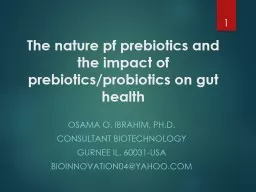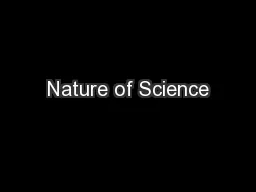PPT-The nature
Author : briana-ranney | Published Date : 2016-03-01
of prebiotics and the impact of prebioticsprobiotics on gut health Osama O Ibrahim PHD Consultant Biotechnology Gurnee IL 60031USA bioinnovation04yahoocom 1 Agenda
Presentation Embed Code
Download Presentation
Download Presentation The PPT/PDF document "The nature" is the property of its rightful owner. Permission is granted to download and print the materials on this website for personal, non-commercial use only, and to display it on your personal computer provided you do not modify the materials and that you retain all copyright notices contained in the materials. By downloading content from our website, you accept the terms of this agreement.
The nature: Transcript
Download Rules Of Document
"The nature"The content belongs to its owner. You may download and print it for personal use, without modification, and keep all copyright notices. By downloading, you agree to these terms.
Related Documents














